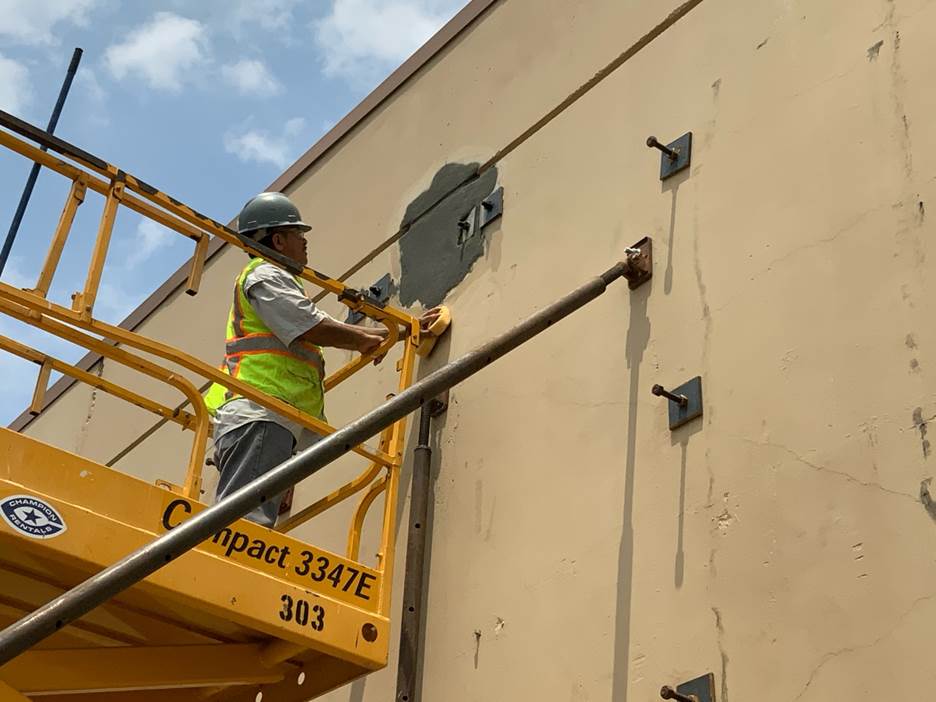Structural Engineered Repairs
Warehouse Tilt Wall Collapse in Houston TX
This warehouse had a failure during Tropical storm Irma. The weight of the roof increase due to heavy rains. As the weight increased the rafter could not hold the weight, the tilt-up wall bowed out and the rafter dropped. Fortunately, the drop was only about 5’. It landed on a very tall stack of sheet rock.
We were able to shore the beam and raise it. This allowed the materials to be moved so that the repair could begin.
After the materials were moved, the repairs started. The roof required partial replacement. The tilt-up wall had bowed out, it needed to pulled back in. The rafter need to be raised and re-secured to the wall.
The tilt wall is braced from the exterior, the damage to the rafter attachment is visible.
After the rafter was raised, the hole that was created in the tilt wall can be seen. Also, at the corner at the right, out side light is visible where the wall separated. The process of straightening the tilt-up wall begins by installing “stiff-backs”, back to back Cee channels. The strength of the “stiff-back”. Allow for bolts attached to exterior plates to gradually pull the wall back into plum.











